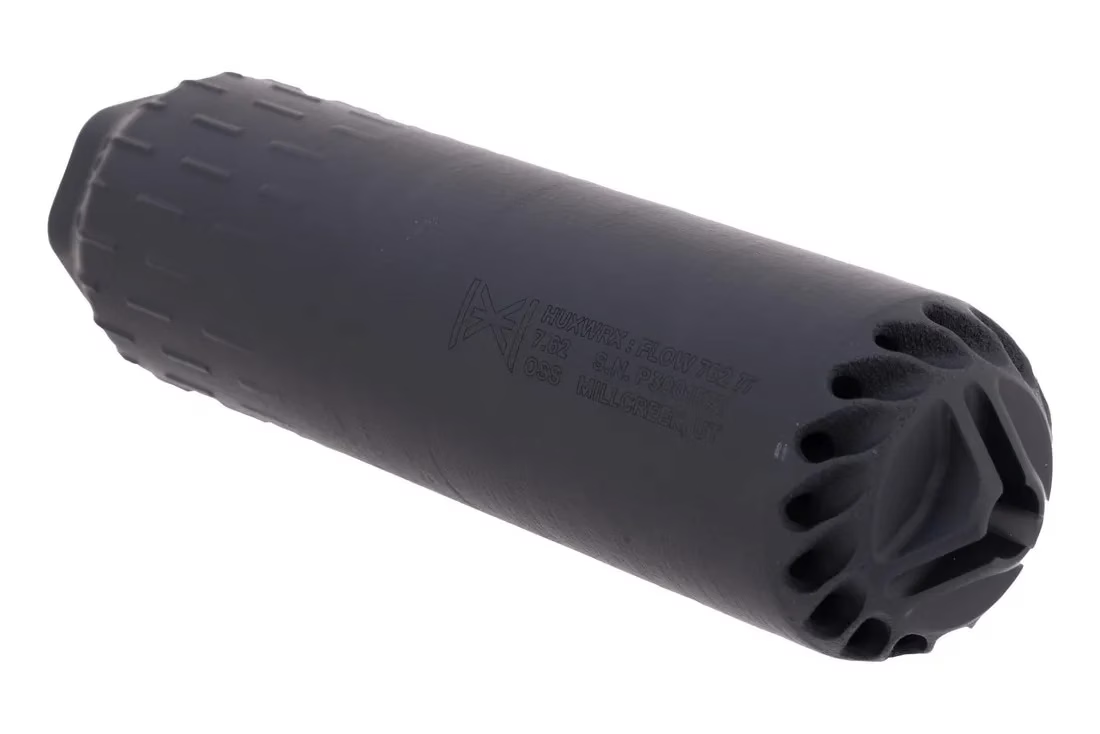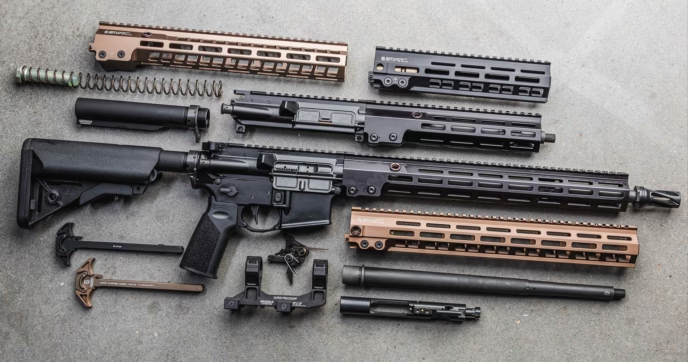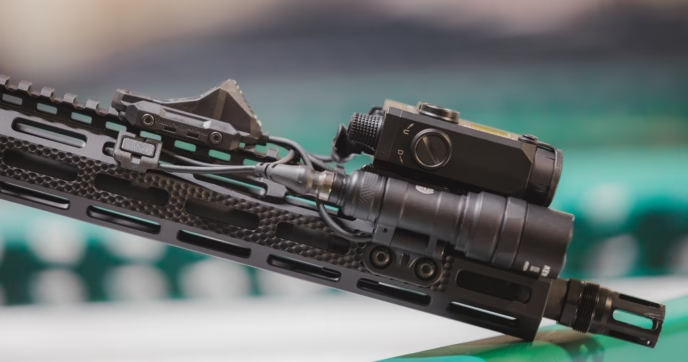The AR-10 has solidified its place as one of the most well-regarded platforms designed around full-power rifle cartridges. Like its little brother, the AR-15, the AR-10 can be tailored to fit a wide range of specific applications, ranging from battle rifle builds that blend power and agility, to DMRs made for long-range precision.
No matter the type of AR-10 build you aim to create, having all the right parts and components is imperative to ensuring it performs the way you want it too. And one component that can have a profound effect on performance is your rifle’s muzzle device.
Muzzle devices are offered in a wide array of configurations that can influence your rifle’s muzzle flash, recoil impulse, muzzle rise, and sound signature. As such, understanding how each option performs is crucial when building out your rifle.
Understanding Muzzle Devices
As noted above, muzzle devices vary heavily in design, with them generally falling into one of four types: flash hiders, muzzle brakes, compensators, and suppressors. We discuss each type at length in our guide, “Flash Hider vs. Compensator”, but below, we’ll get you up to speed on what each type offers:
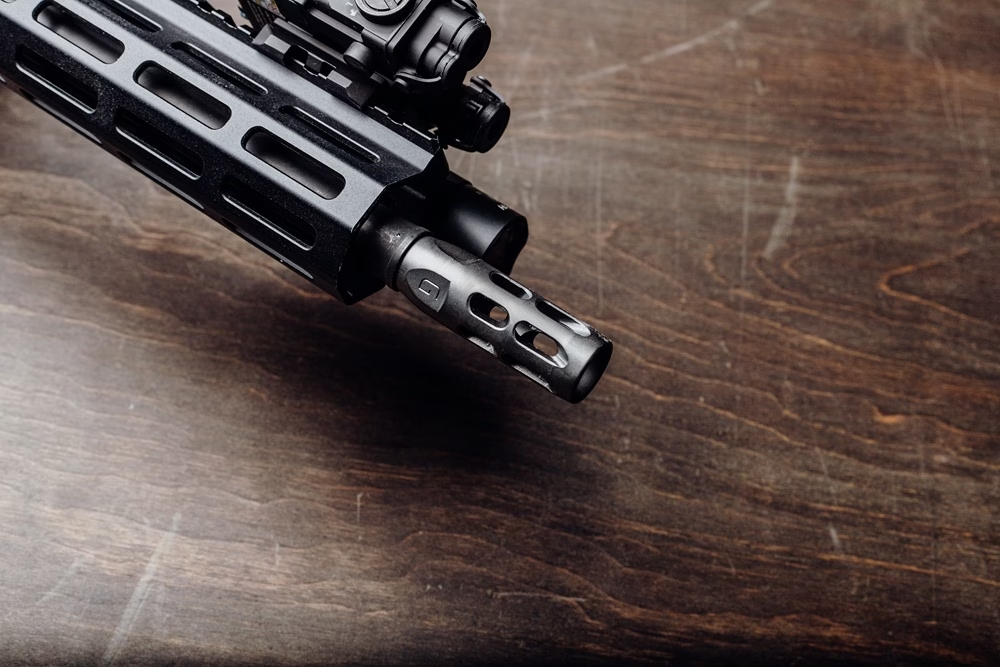
Flash Hiders
Designed to lessen the intensity of the muzzle flash put off by your rifle after firing, flash hiders are one of the most common muzzle devices available. In fact, because of how effective they are, they’ve been the standard issue muzzle device alongside military issue rifles like the M4 Carbine, as well as others, for decades.

Muzzle Brakes
Another common muzzle device is muzzle brakes, which are designed to reduce felt recoil by diverting gases out to the sides instead of directly forward after firing. While effective, it’s important to note that they can intensify your rifle’s muzzle flash, as well as increase its sound signature as the concussive force and noise blows out to the sides, going back to your ears in the process.
Compensators
Compensators are a lot like muzzle brakes, but instead of diverting gas out to the sides, they divert them out the top to reduce muzzle rise. This makes compensators a better choice for scenarios where you need to make accurate shots in rapid succession, such as competitions, as they greatly aid in helping you stay on target.
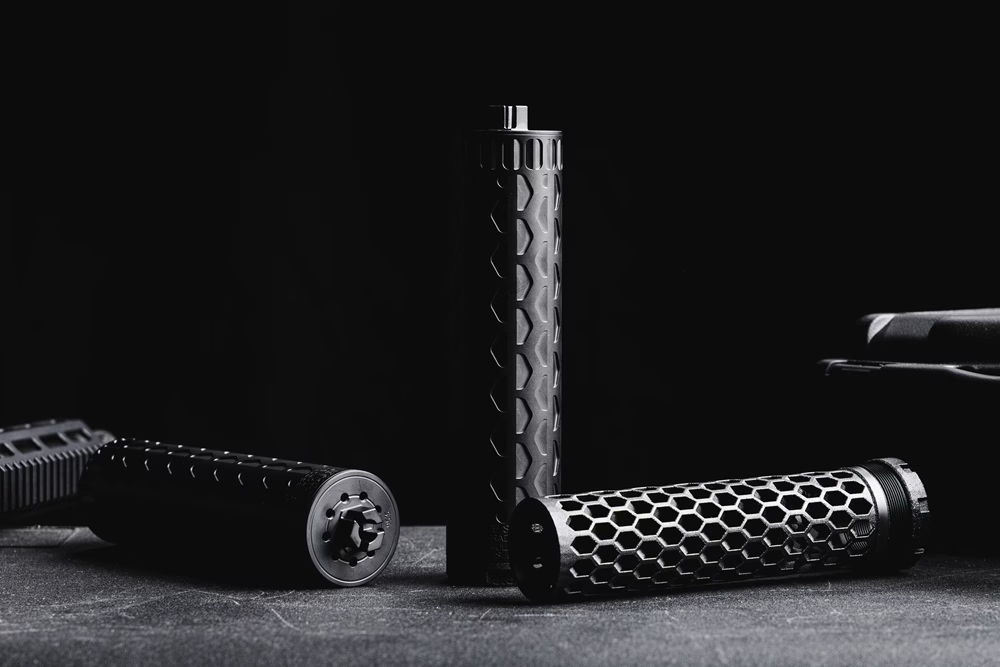
Suppressors
Suppressors are a unique accessory designed to reduce the sound signature of your rifle. They work by catching the gases within a series of internal baffles, slowing down their rate of expansion, and giving them time to cool before venting out the front. Although they won’t completely silence your rifle, they can reduce its sound signature by several decibels. Unlike the other muzzle devices mentioned thus far, you can’t just buy a suppressor.
Suppressors are classified as an NFA item, so you’ll need to file a Form 4, buy a tax stamp, and send in your fingerprints to get approval from the ATF to own one. This process can take a while too, but filing digitally can speed up the process immensely, with approvals returning in a matter of weeks, as opposed to months.
Choosing the Right Muzzle Device for Your AR-10
So, now that you know how each muzzle device performs, choosing one is easy, right? Many enthusiasts often search for the “best muzzle device for an AR-10″, but ultimately, it’s impossible to declare one single muzzle device as the ‘best’ one. It is, however, entirely possible to narrow down the right one for your rifle based on your intended application. Also, most AR-10s utilize a 5/8×24 thread pitch, making muzzle devices nearly universal for all AR-10s.
AR-10 Flash Hiders
Rifles are known for putting off some serious muzzle flash, and for the AR-10, which is typically chambered in either .308 Winchester or 6.5 Creedmoor—two full-power rifle cartridges—they can create a sizeable muzzle flash. Fortunately, being one of the most common muzzle devices available, there are a lot to choose from, with budget-friendly options costing as low as around $10 and more premium options ranging anywhere from around $50 to upwards of $200.
At their core, flash hiders are a solid choice for basically all applications, despite not offering the most in terms of recoil reduction. Plus, more premium .308 flash hider options can function as a suppressor mount as well, allowing you to easily mount a suppressor to your rifle if you own one.
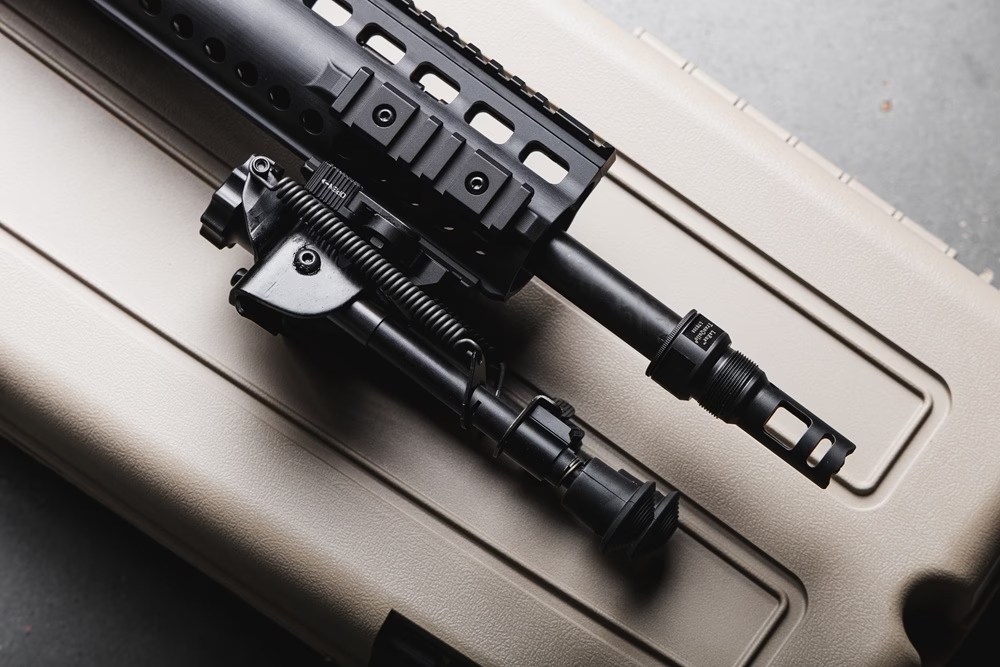
AR-10 Muzzle Brakes and Compensators
Just like for flash hiders, there are a lot of AR-10 muzzle brake and compensator options to choose from, with brands like SureFire, Forward Controls Design, Dead Air, and HUXWRX each producing an assortment of top-tier muzzle devices. As noted above, .308 and 6.5 CM are powerful cartridges, producing a considerable amount of felt recoil, making muzzle brakes and compensators a solid choice. Still, choosing one over the other is dependent on your intended application.
Between the two, a muzzle brake is the better choice for most applications, offering the most in terms of recoil reduction, making them a great pairing for long-range builds and competitive/duty ones. Compensators are still a solid choice to consider, but they’re best suited for fast-paced applications like competitions, where you’re more likely to frequently make multiple shots in rapid succession.
Regardless of which you choose, there are a plethora of options to pick from, and just like with premium flash hiders, premium muzzle brakes/compensators can serve as a suppressor mount too.
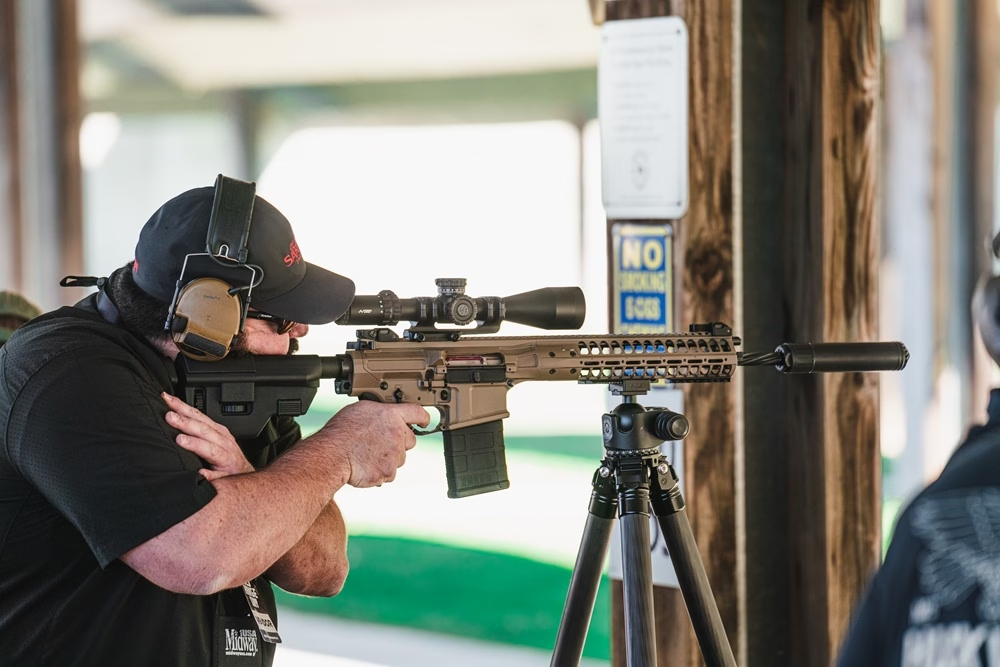
Selecting a Suppressor for Your AR-10
Just like how there are a plethora of muzzle devices to pick from, there’s a wide array of suppressors available to choose from as well. And since the suppressor buying process is much more involved than picking up any other muzzle device, it’s imperative to make sure you get the right one for your build.
Benefits of Using a Suppressor on Your AR-10
Suppressors provide several advantages, the foremost of which is their ability to lessen the sound signature of your rifle. Simply put, rifles are loud, and while a suppressor isn’t going to mute your rifle entirely, it will certainly lessen its sound signature by several decibels. They also provide recoil and flash reduction as well.
Like we mentioned above, suppressors capture the gases within their baffles, slowing down their rate of expansion and the speed at which they vent out of the suppressor, resulting in less felt recoil. Plus, since the gases are captured immediately after leaving the muzzle, the muzzle flash is muted, resulting in much less, or in some cases, virtually no muzzle flash.
Overall, they’re a solid pick for every application as well. Although they won’t offer recoil reduction that’s on par with a dedicated muzzle brake, their noise and flash suppression abilities more than make up for this.

Choosing an AR-10 Suppressor
To get the most out of your suppressor, you’ll want to opt for one that matches your rifle’s caliber. Many new suppressor enthusiasts often opt for 9mm suppressors since they can suppress multiple calibers—and while you’ll get decent results with one, the larger bore diameter will allow more of the gases to escape, resulting in more noise, which is especially noticeable on 6.5 Creedmoor AR-10 rifles. As such, you’ll want to opt for a dedicated .30 Cal or a 6.5mm suppressor.
Suppressors like the SureFire SOCOM 7.62, HUXWRX FLOW 7.62, and the Rugged Suppressors Micro30 are a few popular options designed specifically for .30 Cal cartridges like .308. Comparatively, there aren’t many dedicated 6.5 suppressors, though that is beginning to change as the 6.5 Creedmoor continues to rise in popularity, with the Q Jumbo SHRIMP being a popular suppressor choice. For the most part, a .30 Cal suppressor can still do an excellent job suppressing 6.5 Creedmoor as the bullet diameter difference between them is only .044 inches.
Just keep in mind that regardless of what caliber you opt for in your rifle build, you will still need to wear ear pro, even when using a suppressor. We’ve mentioned it a few times thus far, but both cartridges are incredibly powerful, producing a loud sound signature. Although .308 is available in a sub-sonic configuration, its sound signature can still be loud enough to permanently damage your hearing. 6.5 Creedmoor is also available in a sub-sonic configuration, but it’s primarily designed for bolt-action rifles and won’t cycle in an AR-10. As such, it will still be incredibly loud despite being suppressed.
Conclusion
Your AR-10’s muzzle device can have a considerable impact on its performance. With the vast assortment of options to choose from, selecting one can be a challenge, but it doesn’t have to be. By taking your rifle’s intended use, as well as your own needs and preferences into consideration before buying, you can easily make the right choice for your build.
Flash hiders are the most budget-friendly muzzle device, offering excellent flash suppression despite not doing much to lessen felt recoil. Muzzle brakes and compensators are exceptional for reducing felt recoil and muzzle rise, respectively, though their designs increase muzzle flash and concussion. Lastly, suppressors can effectively lower the sound signature of your rifle, while also providing flash mitigation and slight recoil reduction, but they come with the caveat of a more complicated buying process.
Although it’s impossible to declare one muzzle device possibility as the ‘best’ one, there are a lot of options that can greatly enhance your build. So long as you carefully consider all your options, you’ll be good to go, regardless of which one you choose.

